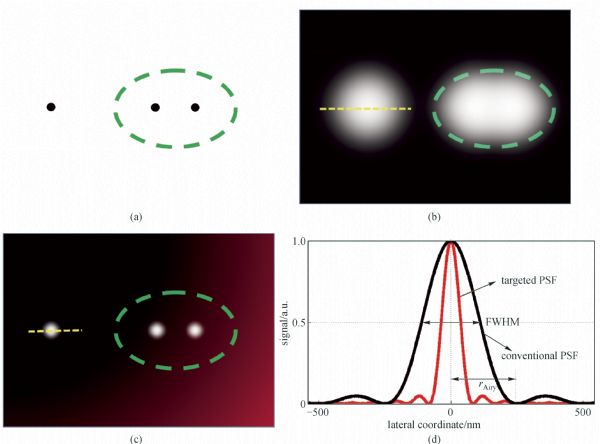In detail, two PSFs are needed, of which one is a solid (blue, Fig. 3(a)) and the other is a doughnut-shaped (yellow, Fig. 3(a)). The probe molecules in the illuminated spot are first excited to a higher energy state S
1 by the solid PSF focused directly by a laser beam with wavelength of about 640 nm. Before spontaneous emission of fluorescence occurs, which takes a few nanoseconds, the second doughnut-shaped PSF focused by a STED beam (e.g., 740 nm) modulated by a 2π phase mask illuminates the same spot to de-excite the probe molecules. The de-excitation process is to force molecules in periphery area of the excitation PSF from their excited electronic state back to their ground/non-fluorescence state by stimulation emission, and only molecules in the doughnut hole stay in S
1 (fluorescence state) and could emit fluorescence [
3,
15]. A band-pass filter is essential in collecting useful light as it stops the stimulated photos and only lets the fluorescence pass through. Therefore, a sharper effective PSF of fluorescence is generated (green, Fig. 3(a)). STED imaging is relatively fast for small fields of view and requires no data post processing, while it has a resolving ability of about 30 nm. However, STED has disadvantages that it requires precise special dyes and expensive setups, and the high laser power which is required to totally de-excite the unwanted molecules may cause an easy photo-bleaching and phototoxicity.










